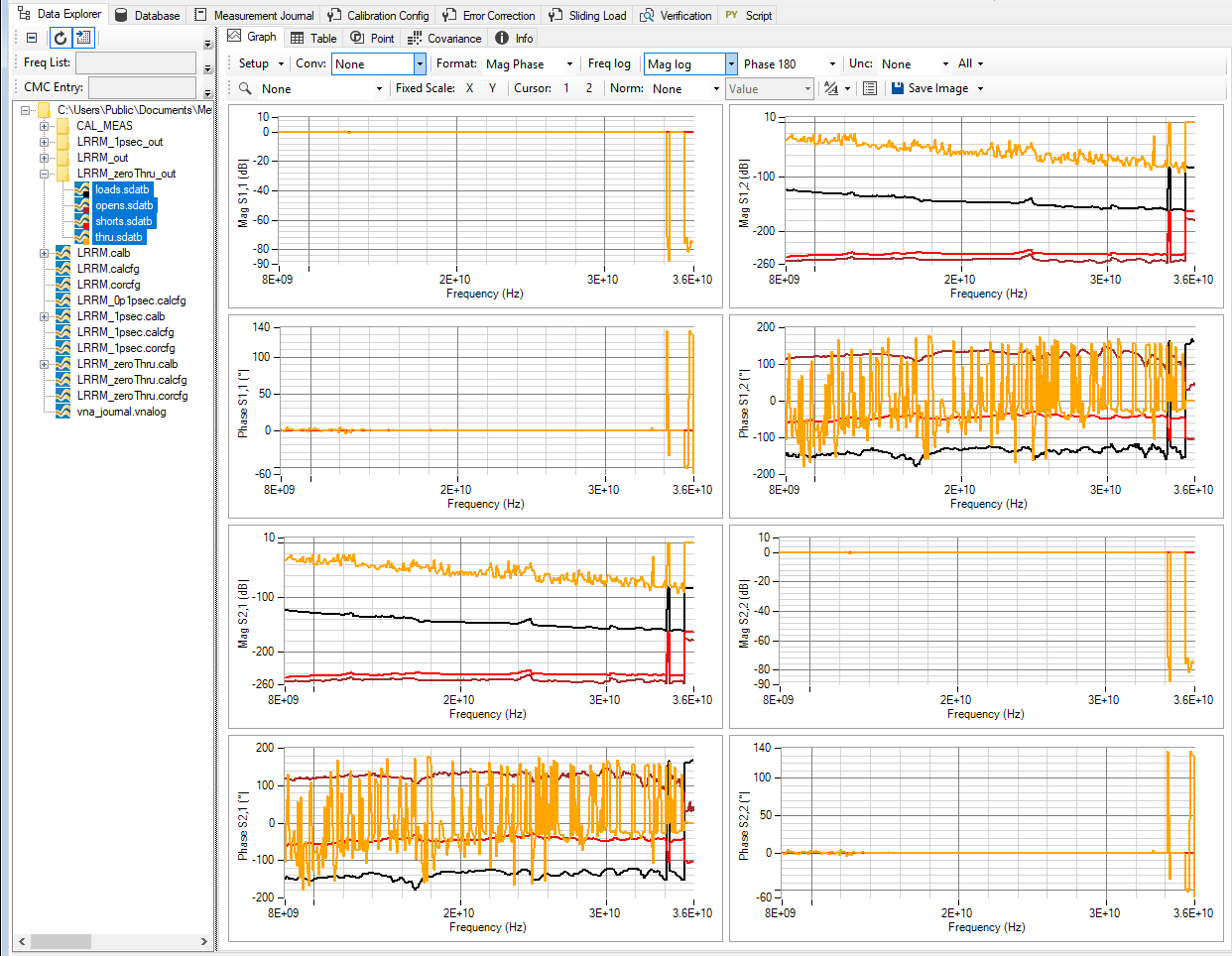LRRM calibration results
93 views
Skip to first unread message
Diogo
Mar 24, 2020, 10:12:02 AM3/24/20
to VNA Tools
Hi,
I have been using the METAS VNA Tools for calibration of on-wafer measurements.
I was attempting to realize a 2-tier calibration, using the LRRM algorithm with a zero length Thru ('IdealThru50Ohm.calstd') when I noticed some wrong results.
In this attempt after applying the calibration to the calibration measurements, I saw the following:
- calibrated Thru -> also ~0dB S11 and S22 + very low S21 and S12 <-20dB
- calibrated Shorts -> ~0dB S11 and S22 but at ~0deg phase (I have tried both 'UnknownFlushShort50Ohm.calstd' and 'UnknownReflection.calstd' with the same results)
Using the same data but with a non-zero length Thru (1), it seems that the results at low frequencies start to become more acceptable.
For example, with a 0.1psec delay line, the results seem to be more acceptable up ~12GHz. And, with a 1psec delay line, the results seem to be more acceptable up to ~24GHz.
In order to understand the cause of the issue, I have tried to do an LRRM calibration on simulated measurements. Starting with a calibration error terms, that are both described by a delay line on the left and right ports of the VNA. I have tried to do an LRRM calibration with a zero length thru with both an ideal load (50Ohm and 0 inductance) and with a load with a small series inductance.
Here the results I have obtained were different.
I did not see the issue I have seen with the real measurements, but with the non-ideal load, the series inductance does not seem to be calculated at all. (I am using the 'UnknownSeriesInductance_50Ohm_1Ohm.calstd' load standard)
After applying the calibration to the simulated load measurement, I obtain an ideal load result with and without the series inductance.
Both these results are very strange. Any ideas what could be going on?
By the way, I have tried to do the 0 length Thru LRRM 2-tier calibration (with the same real measurements) in an old version of the WinCal XE calibration software, and the results seem to be very acceptable.
Thank you so much in advance for all your help. And thank you for all your hard work putting together this nice piece of software.
Regards, Diogo
Michael Wollensack METAS
Mar 25, 2020, 3:01:12 AM3/25/20
to VNA Tools
Hi,
a two-tier calibration is not needed to do an On-Wafer LRRM calibration.
See as well example '09_OnWafer_Example_GGB_CS-5' which is installed in 'C:\Users\Public\Documents\Metas.Vna.Tools\Projects'.
The following presentation https://planarcal.ptb.de/fileadmin/documents/empir/14Ind02/documents/Meetings/20171214_Bern/3_-_VnaToolsOnWafer_SOLT_vs_LRM_vs_LRRM.pdf is a description of the '09_OnWafer_Example_GGB_CS-5' project.
Regards
Michael
Diogo
Mar 25, 2020, 5:30:30 AM3/25/20
to VNA Tools
Hi Michael,
I understand that. This was more to simplify the analysis of what I was seeing.
Since the 1st Tier calibration was made to the probe tips (I am on-wafer) and this one was meant to be done to the middle of the Thru, the error terms that need to be calculated are easier to understand.
In any case, a direct 1st Tier calibration on the raw data from the analyzer gives similar results:
- calibrated Loads -> ~0dB S11 and S22
- calibrated Shorts -> ~0dB S11 and S22 but at ~0deg phase (I have tried both 'UnknownFlushShort50Ohm.calstd' and 'UnknownReflection.calstd' with the same results)
Reply all
Reply to author
Forward
0 new messages




